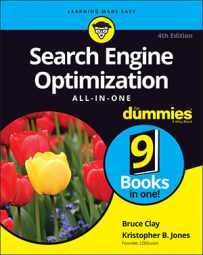In order for your XML Sitemap to be useful for SEO, the XML Sitemap should be constructed according to the current Sitemap Protocol format (which is regulated by Sitemaps.org). Sitemap Protocol allows you to tell search engines about the URLs on your website that should be crawled. An XML Sitemap is a document that uses the Sitemap Protocol and contains a list of the URLs for a site.
The Protocol was written by the major search engines (Google, Yahoo, and Bing) to be highly scalable so that it can accommodate sites of any size. It also enables webmasters to include additional information about each URL (when it was last updated, how often it changes, and how important it is in relation to other URLs in the site) so that search engines can more intelligently crawl the site.
Note that even though its name is similar to the traditional HTML sitemap, an XML Sitemap is a totally different kind of document, and the two are not interchangeable. You shouldn’t rely on an XML Sitemap alone for your site.
XML Sitemaps define for the spider the importance and priority of the site, better enabling the search engine to index the entire site and to quickly re-index any site changes, site expansions, or site reductions. This XML format offers excellent site indexing and spider access.
Additionally, many sitemapping tools can diagnose your XML Sitemap, informing you of duplicate content, broken links, and areas that the spider can’t access. Sitemaps.org has a tool that constructs an XML file for you: This is a great place to start.
Google adheres to Sitemap Protocol 0.9 as dictated by Sitemaps.org. Sitemaps created for Google by using Sitemap Protocol 0.9 are therefore compatible with other search engines that adopt the standards of Sitemaps.org.
A normal version of the XML code looks something like this:
<?xml version="1.0" encoding="UTF-8"?> <urlset xmlns="http://www.sitemaps.org/schemas/sitemap/0.9"> <url> <loc>http://www.example.com/</loc> <lastmod>2005-01-01</lastmod> <changefreq>monthly</changefreq> <priority>0.8</priority> </url> </urlset>
Check out this table for both the required and optional tags in XML Sitemaps.
| Tag | Required or Optional | Explanation |
|---|---|---|
| Required | Encapsulates the file and references the current protocol standard. | |
| Required | Parent tag for each URL entry. The remaining tags are children of this tag. | |
| Required | URL of the page. This URL must begin with the protocol (such as http://) and end with a trailing slash, if your web server requires it. This value must be less than 2,048 characters. | |
| Optional | The date of last modification of the file. This date should be in W3C Datetime format. This format allows you to omit the time portion, if desired, and use the YYYY-MM-DD format. | |
| Optional | How frequently the page is likely to change. This value provides general information to search engines and may not correlate exactly to how often they crawl the page. | |
| Optional | The priority of this URL relative to other URLs on your site. Valid values range from 0.0 to 1.0. This value has no effect on your pages compared to pages on other sites and only lets the search engines know which of your pages you deem most important so that they can order the crawl of your pages in the way you prefer. The default priority of a page is 0.5. You should set your landing pages at a higher priority and your nonlanding pages at a lower one. |
The XML Sitemap also must
Begin with an opening urlset tag and end with a closing urlset tag.
Include a url entry for each URL as a parent XML tag.
Include a loc child entry for each url parent tag.
Content siloing can be strengthened by both traditional sitemaps and XML Sitemaps. A lot of evidence supports the adoption of complete site transparency in search engine optimization. That means that all the elements of your site should consistently offer subject relevancy. You can always work on different projects and use different methods, but a clear and concise method of building and maintaining your site is the best way to go.
You are helped by using traditional sitemaps and XML Sitemaps, which ensure that everyone (visitors and search engines alike) is on the same page. Not only will your IT and marketing departments agree, but even the site users will be able to tell what your site is trying to say.

